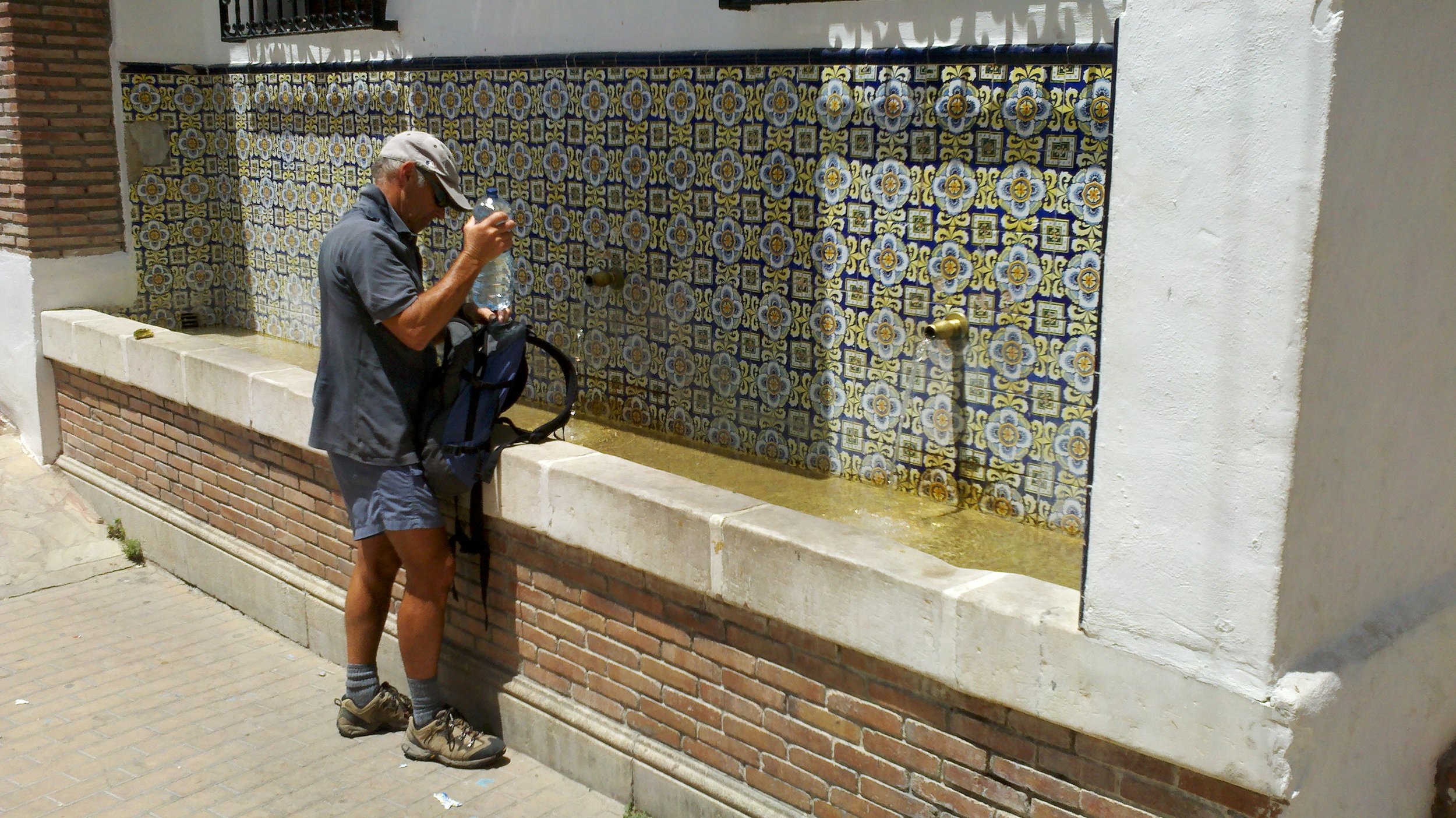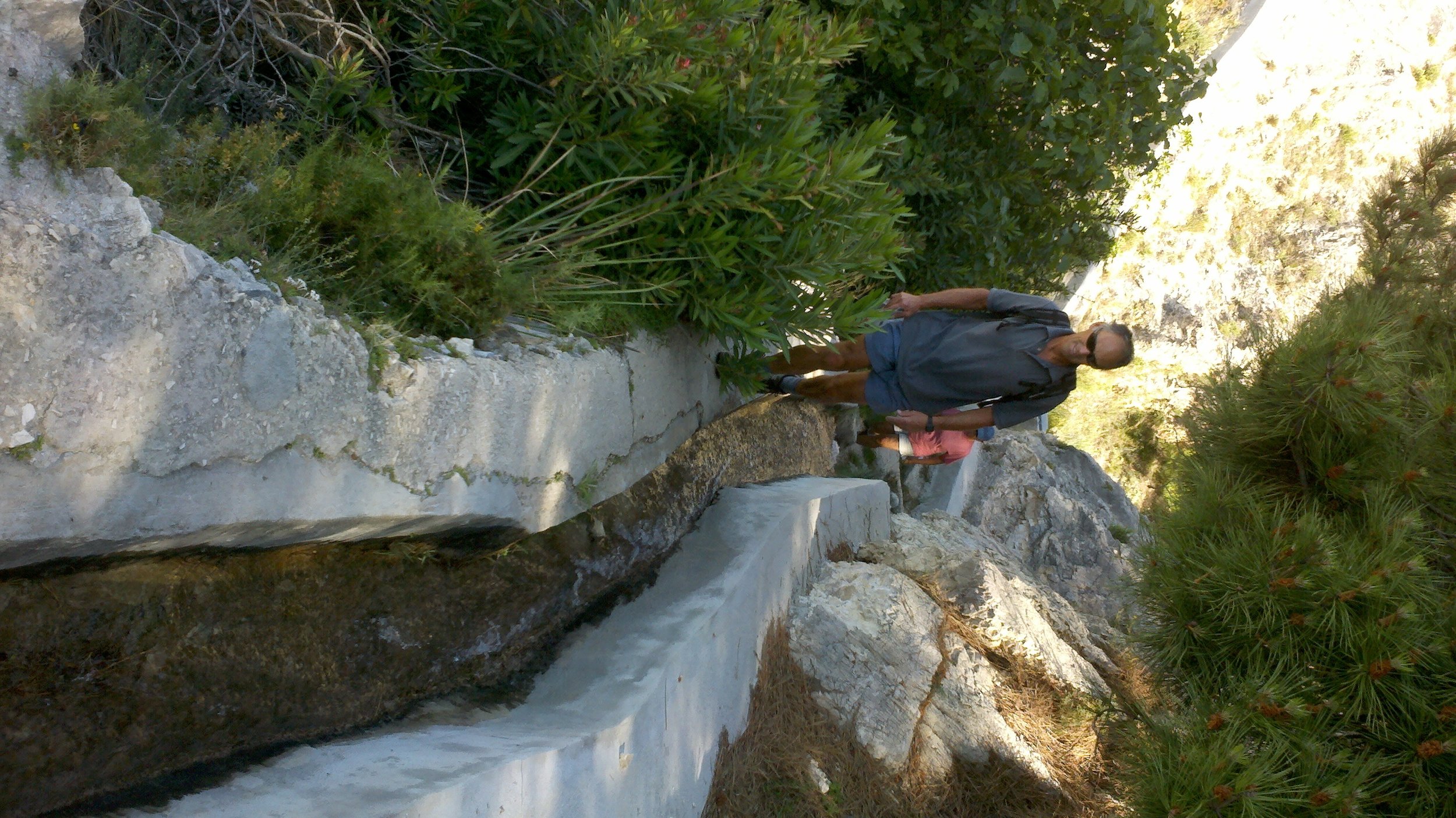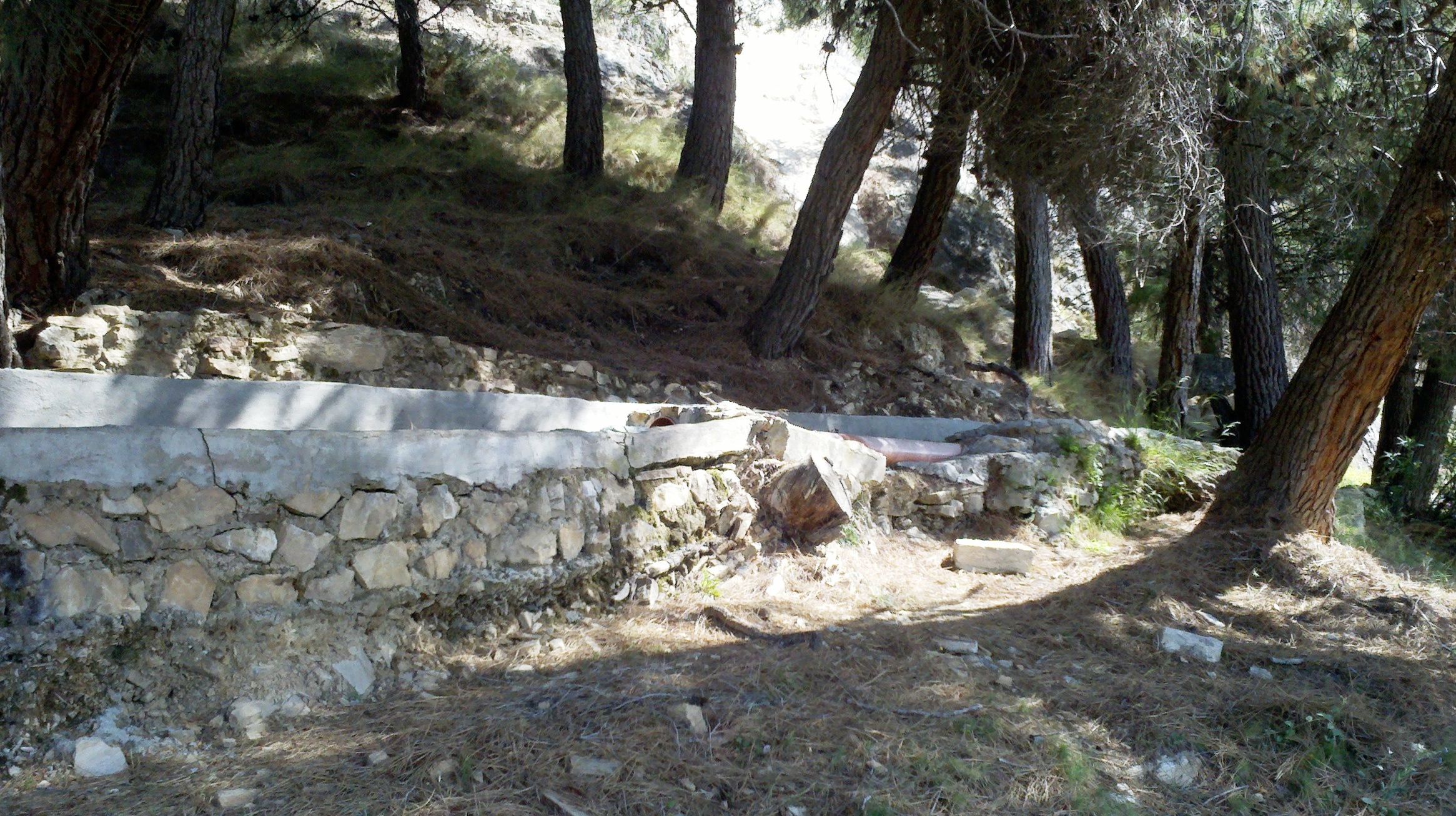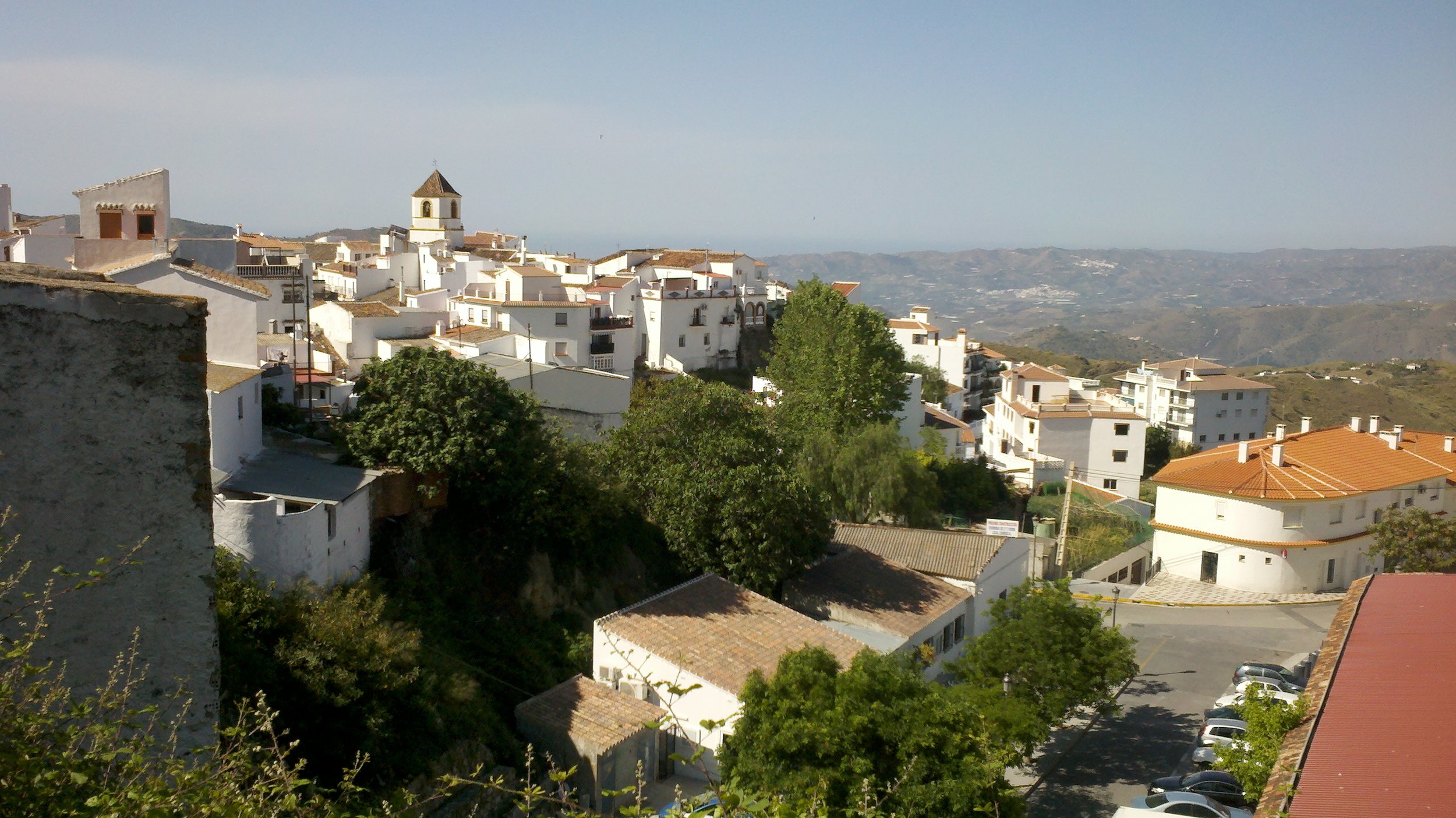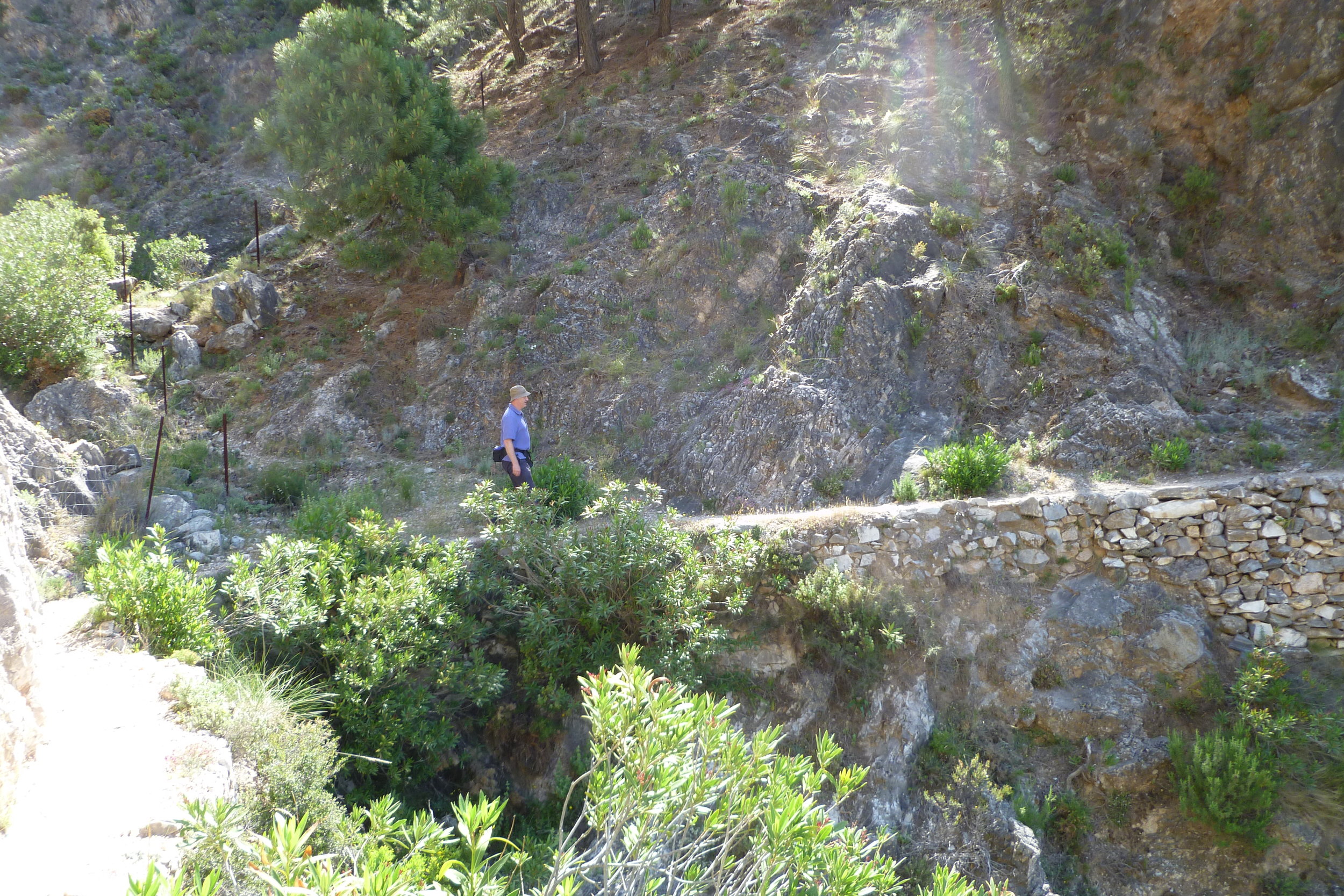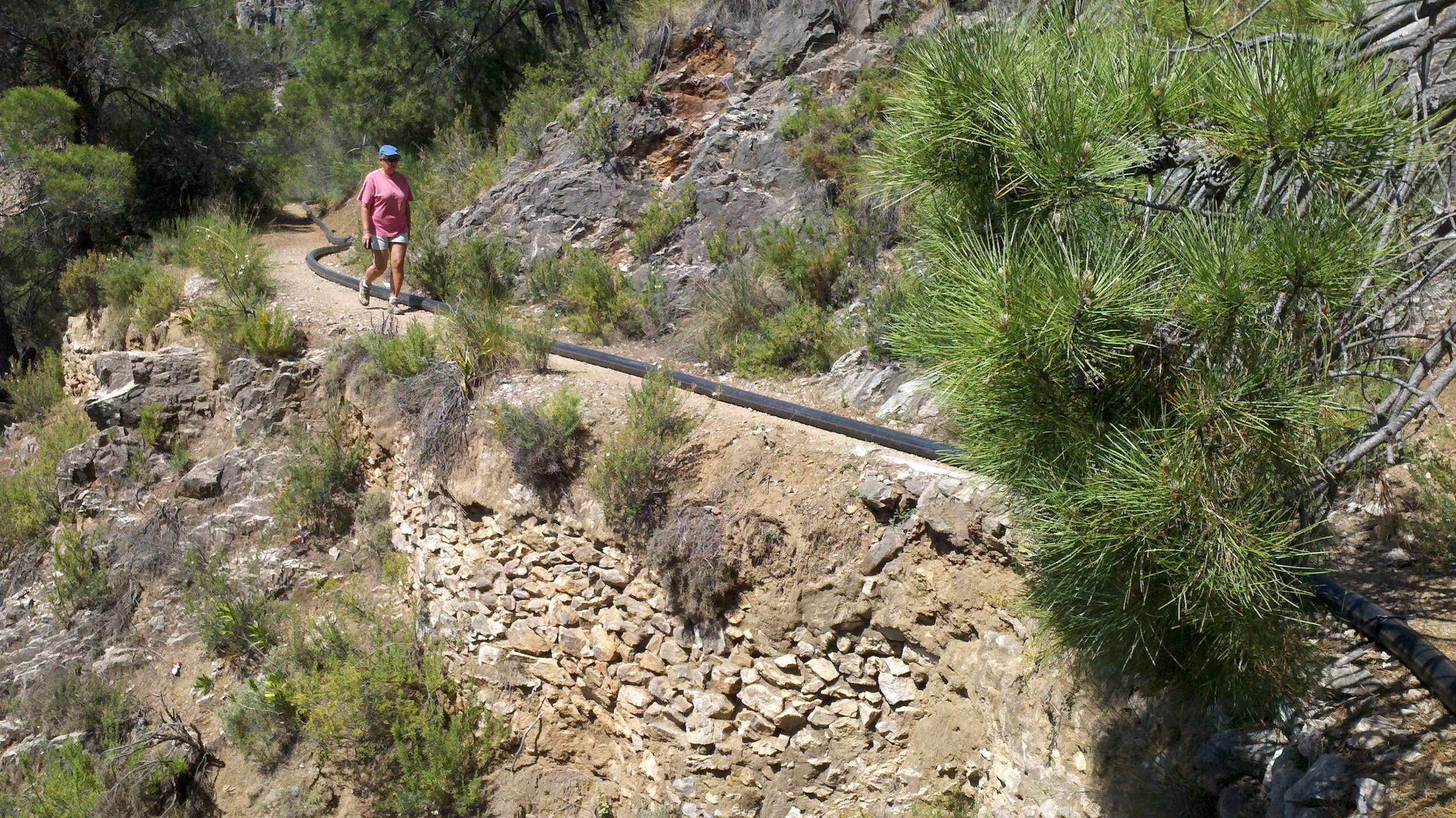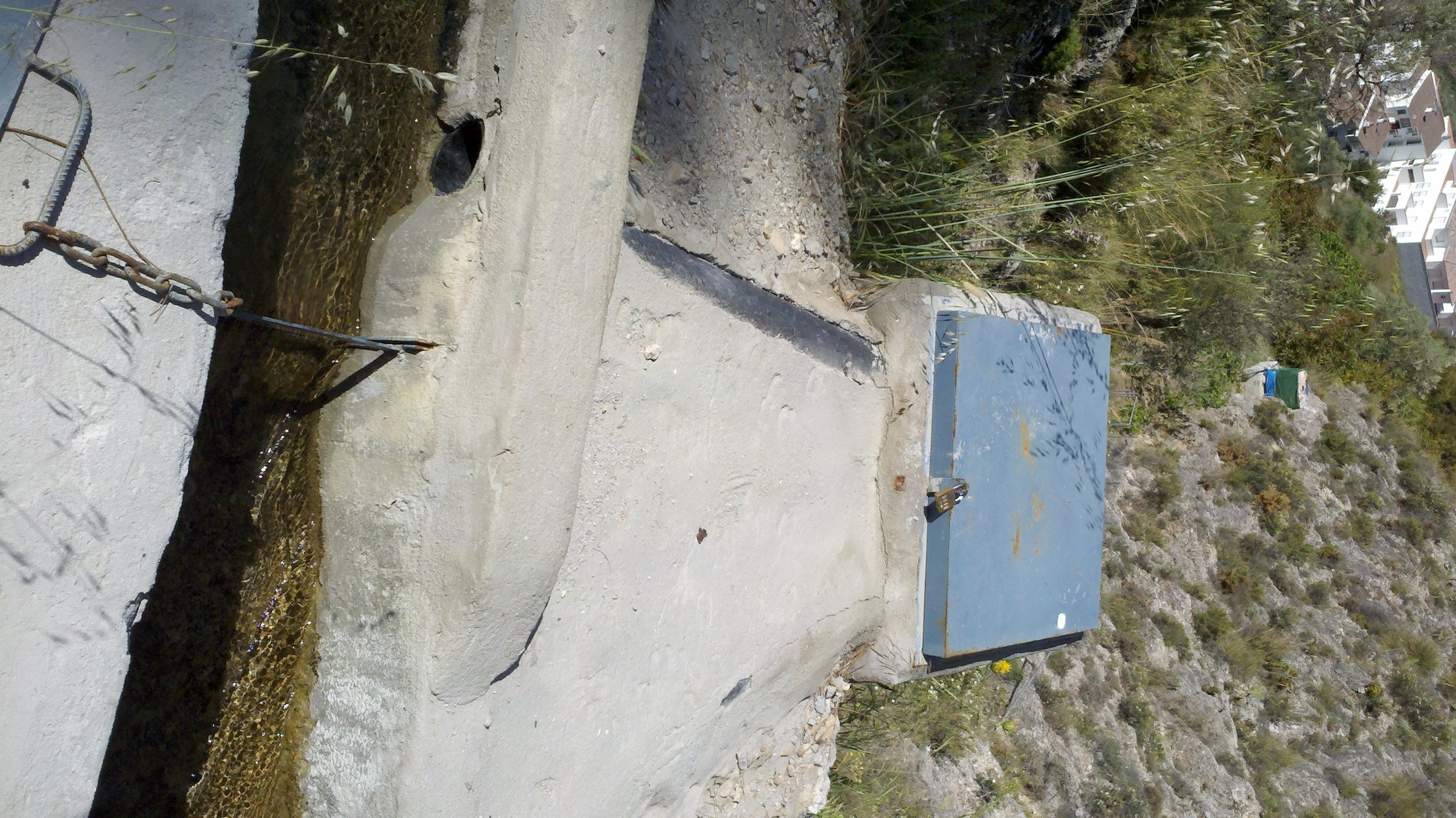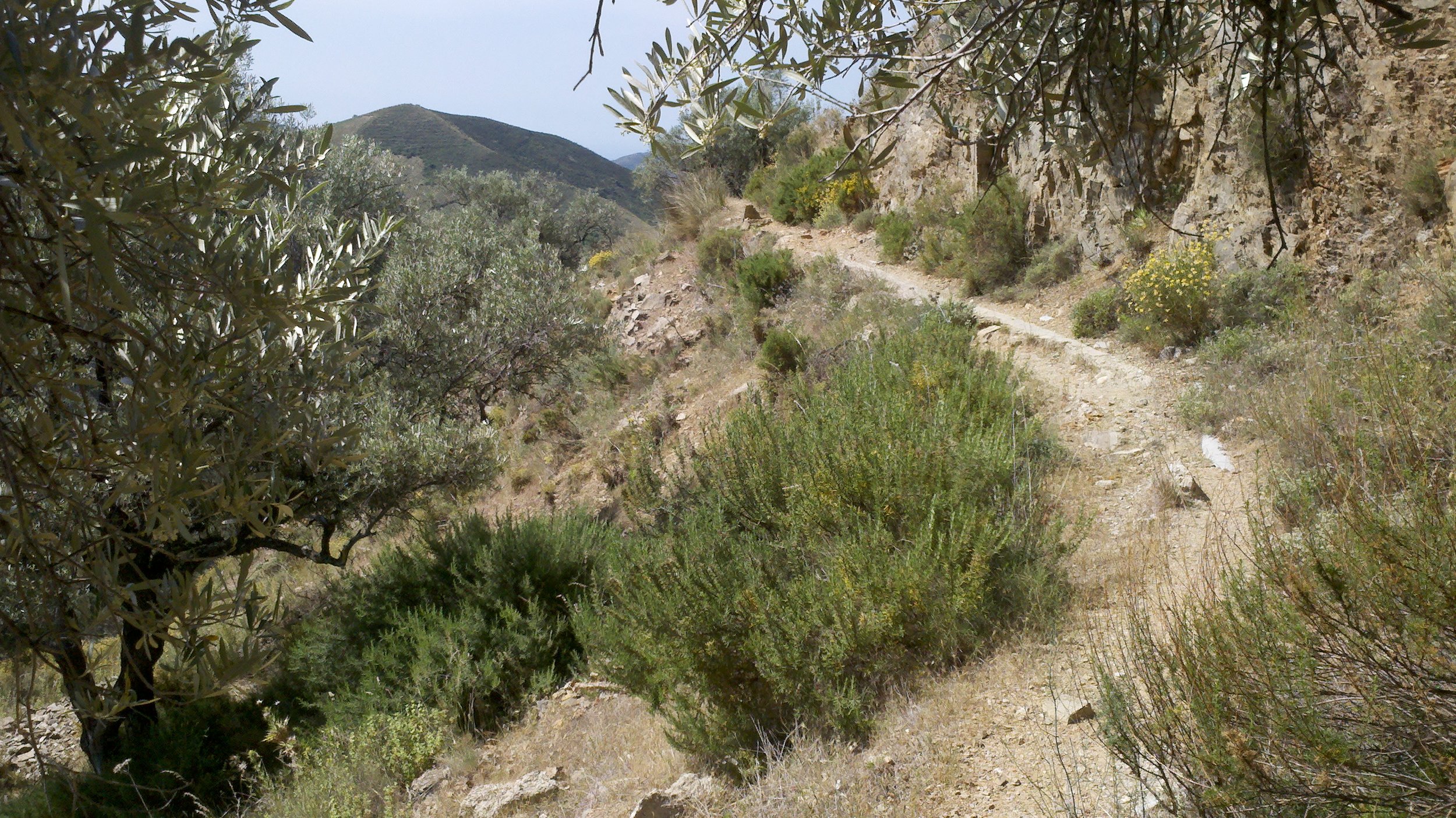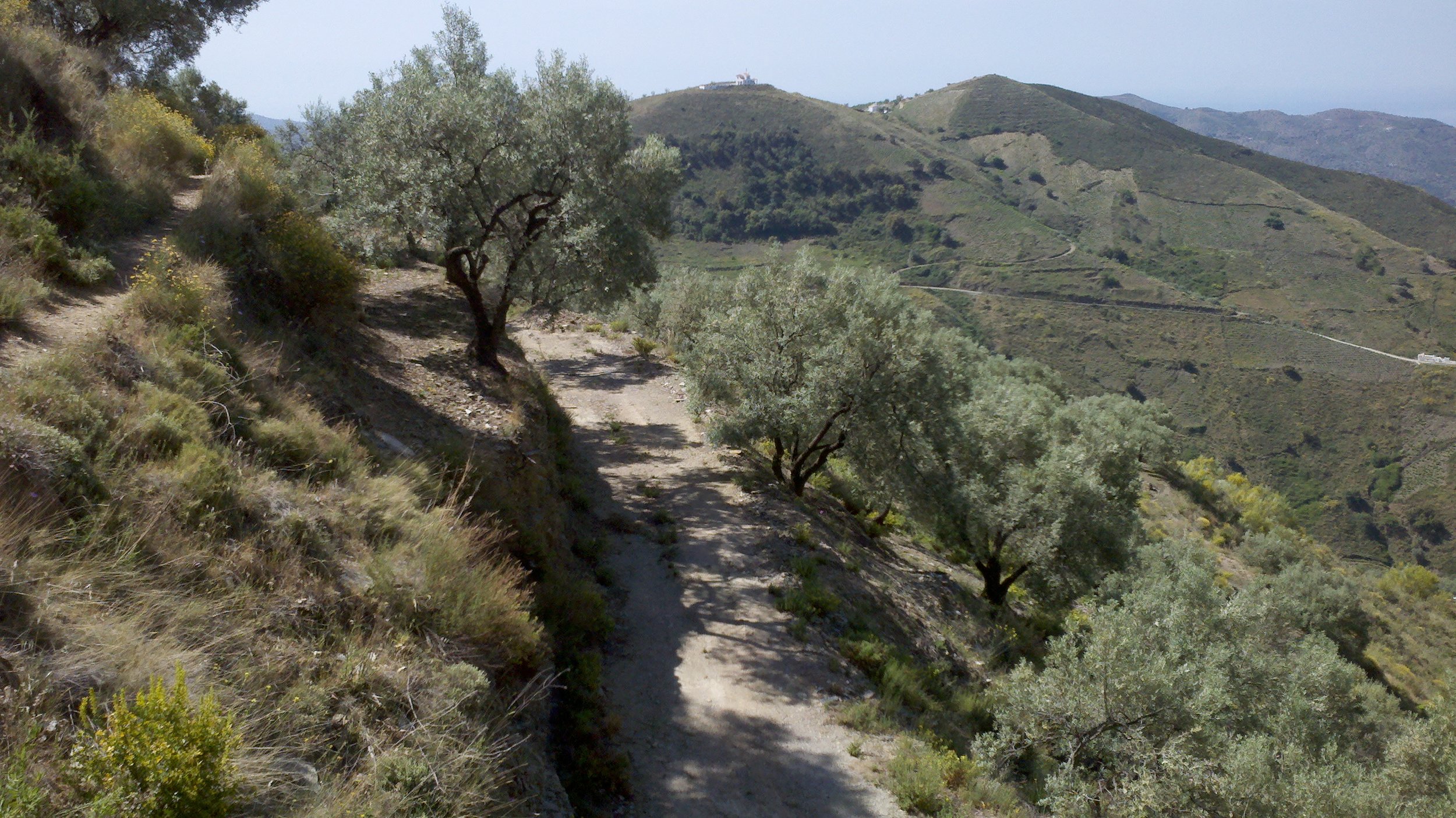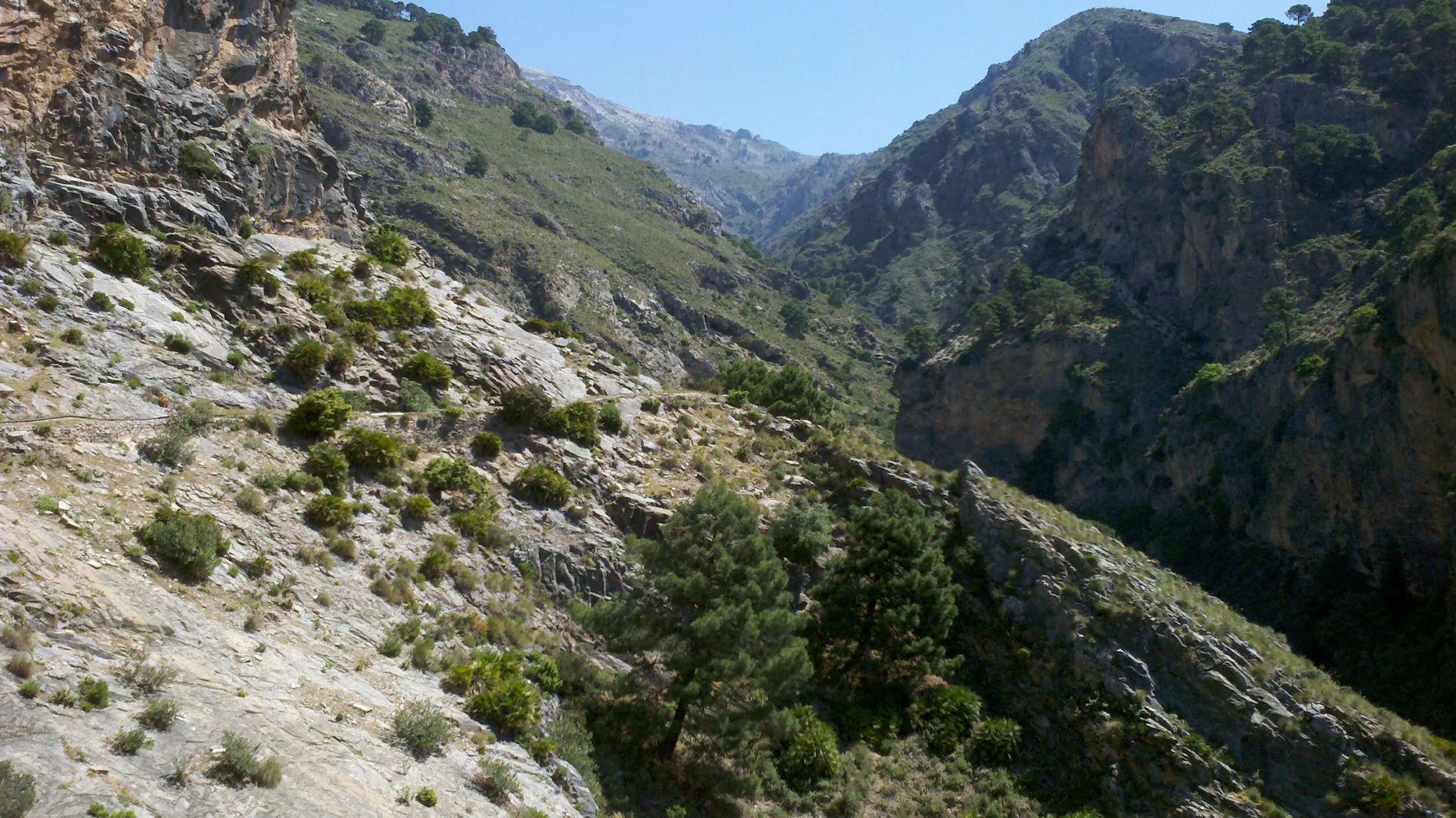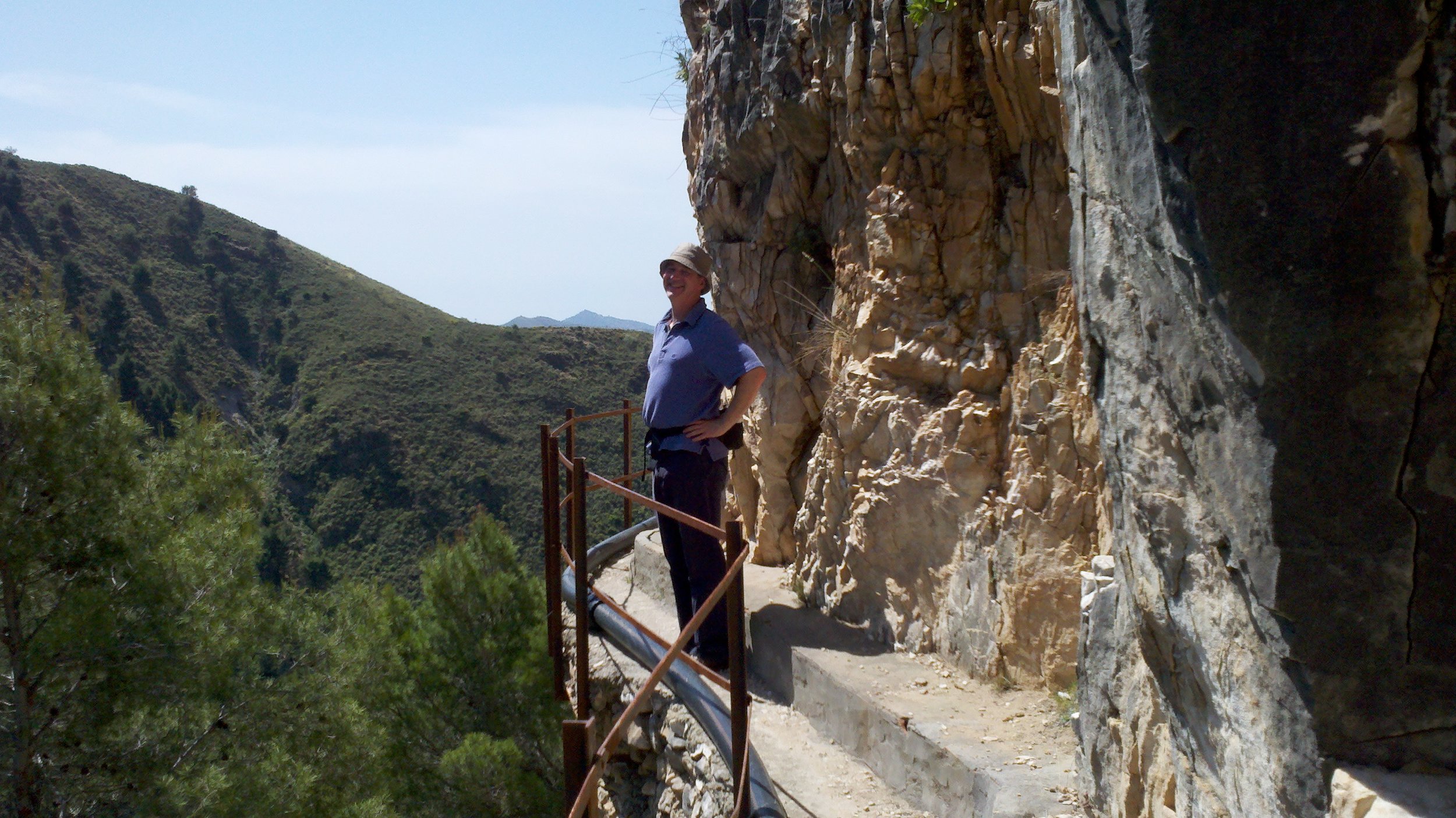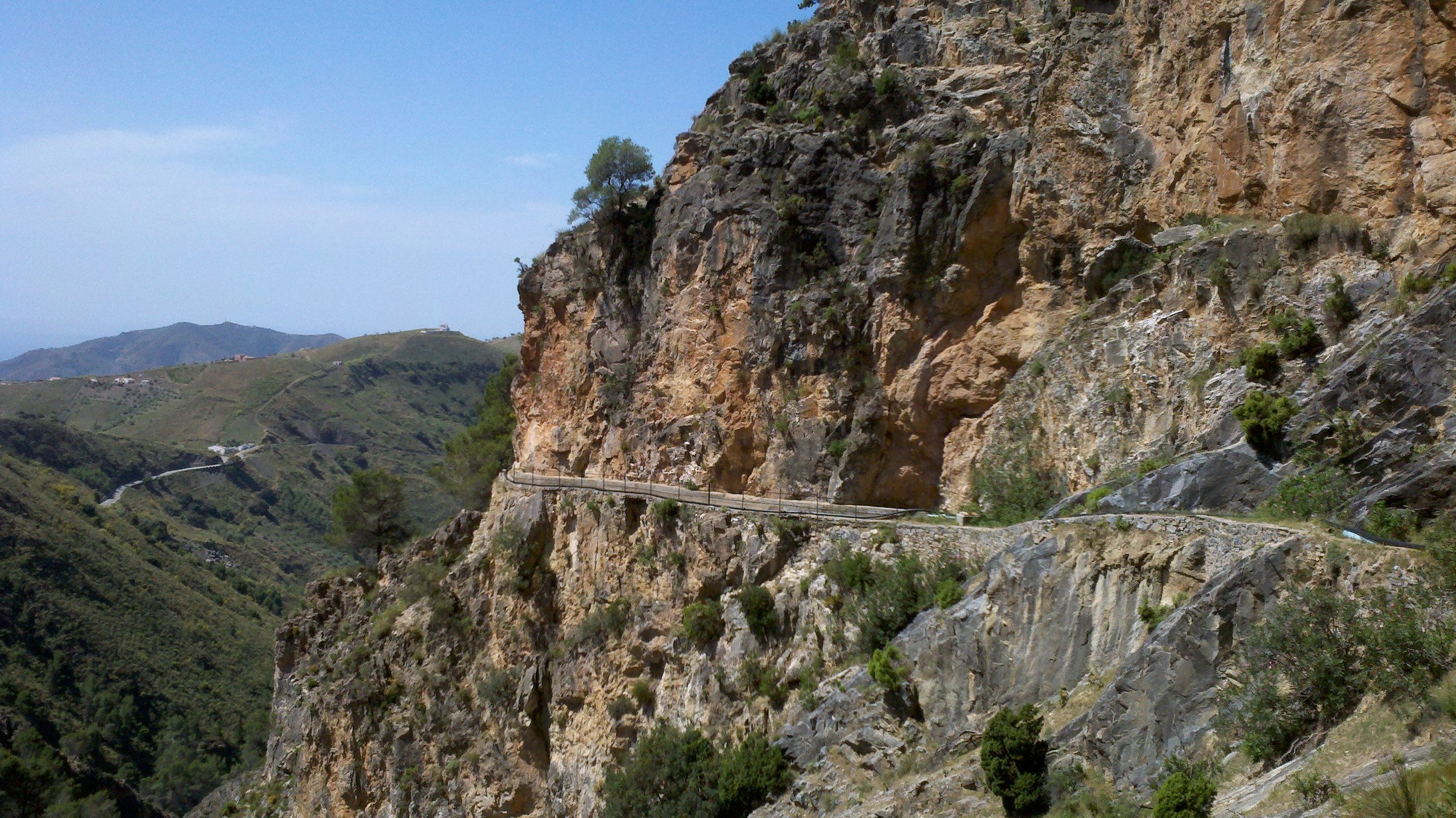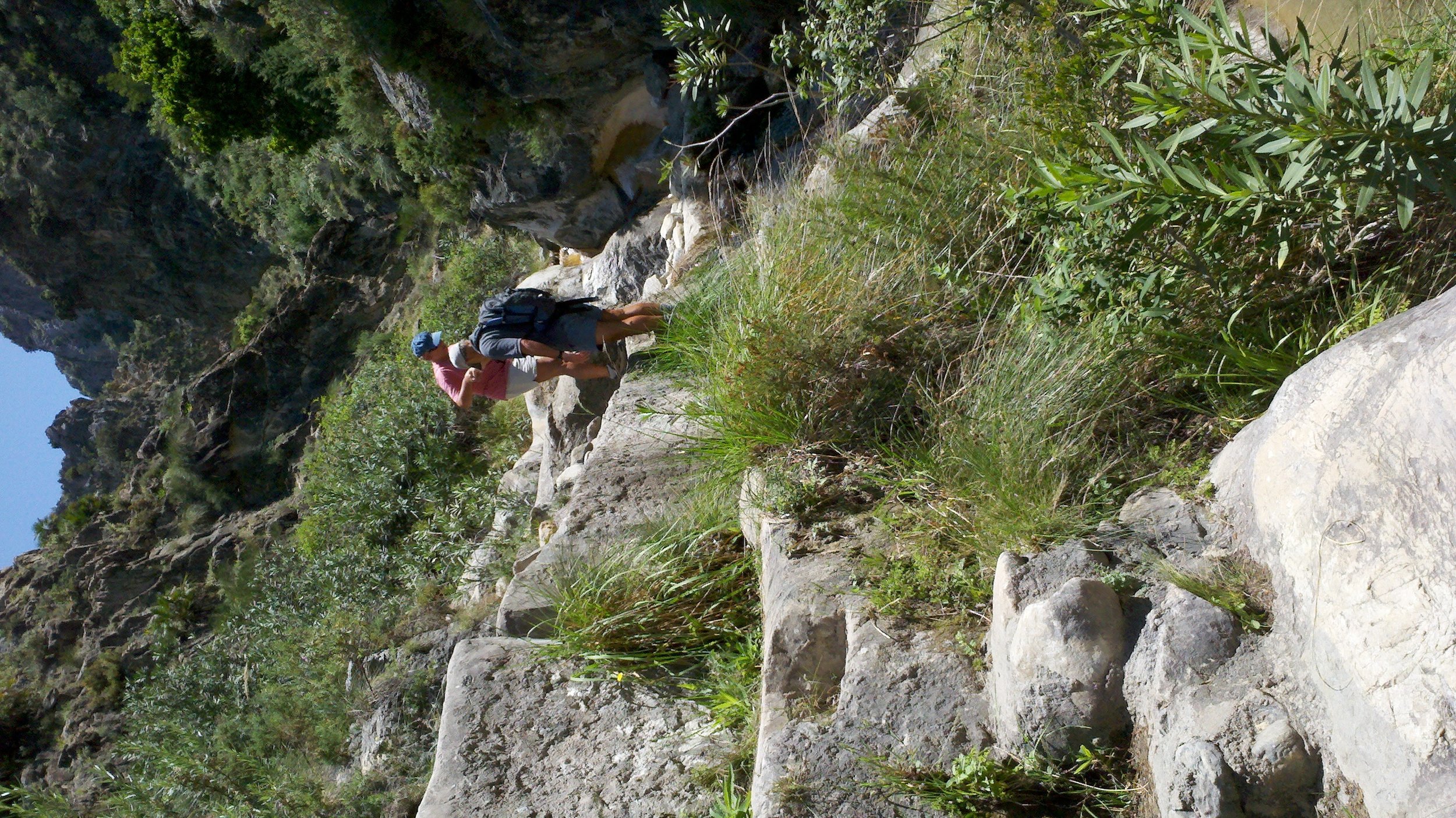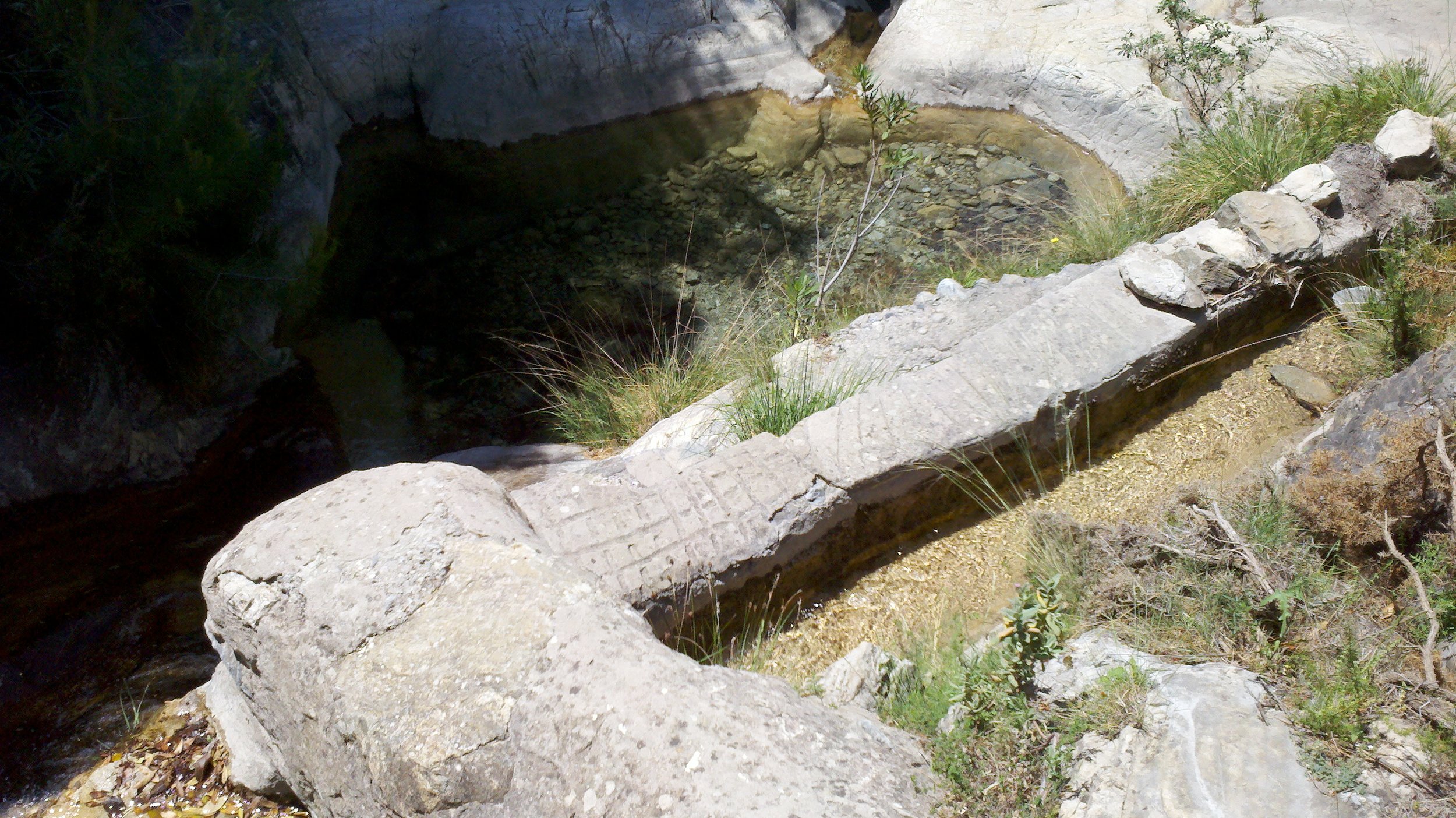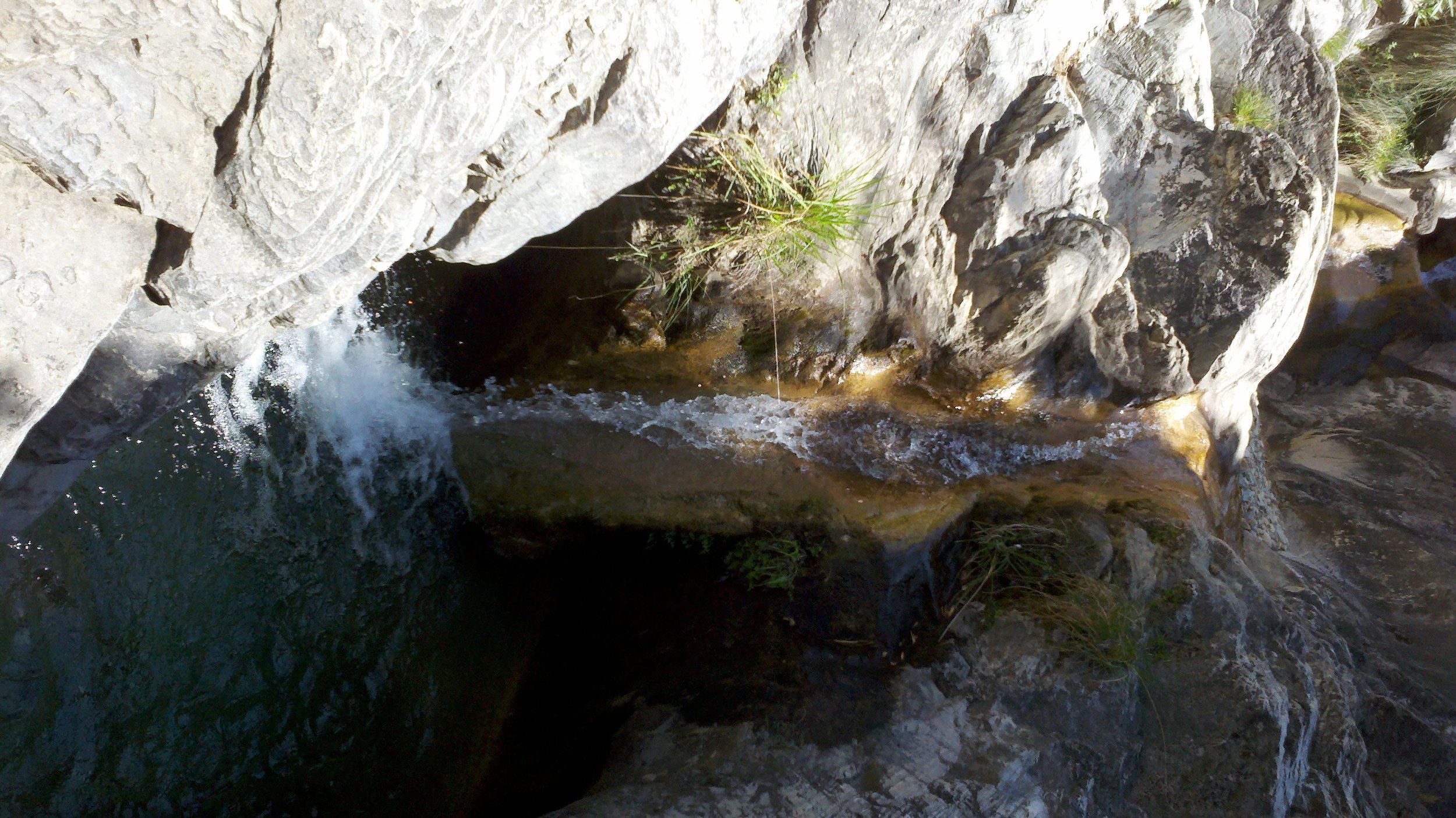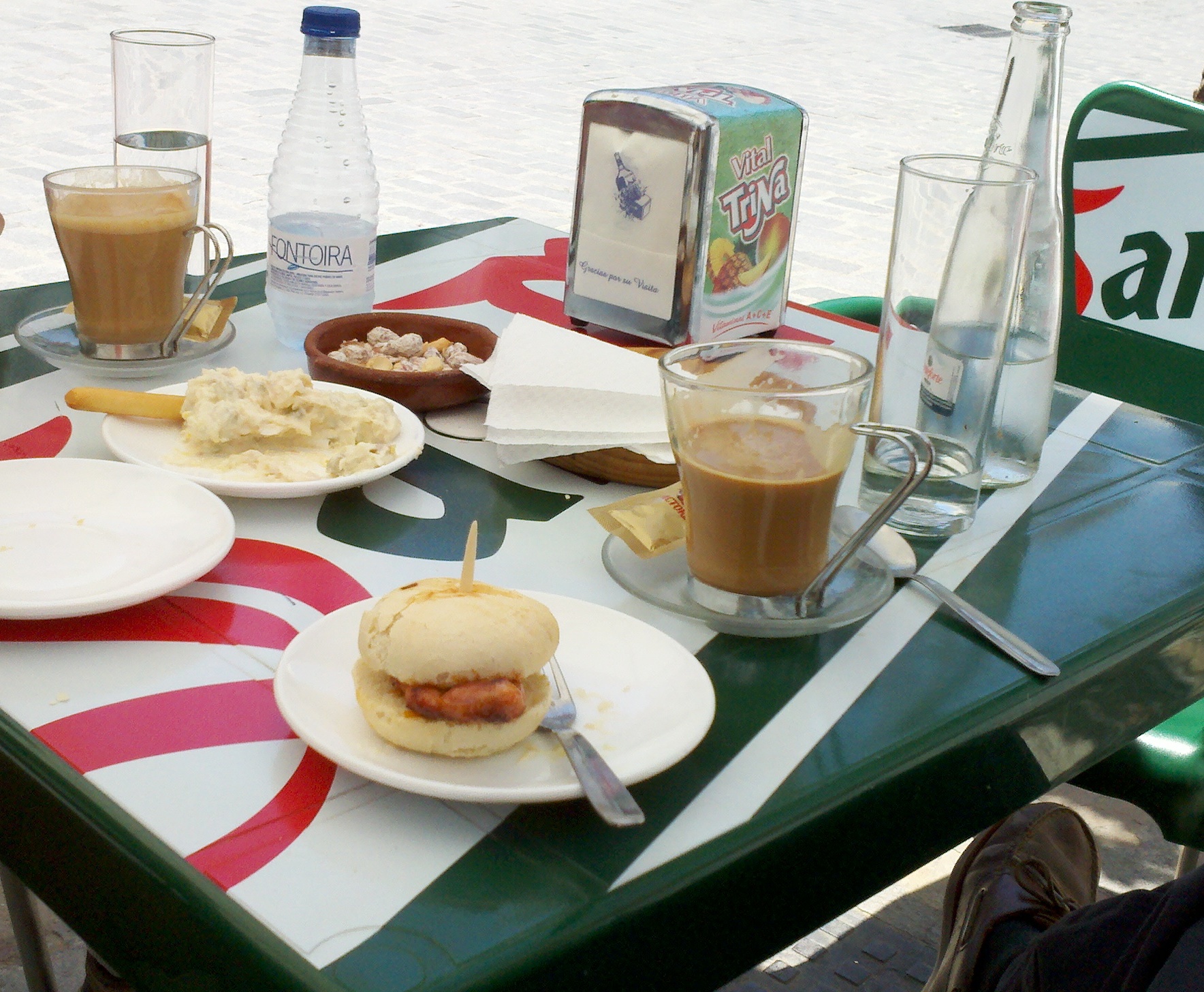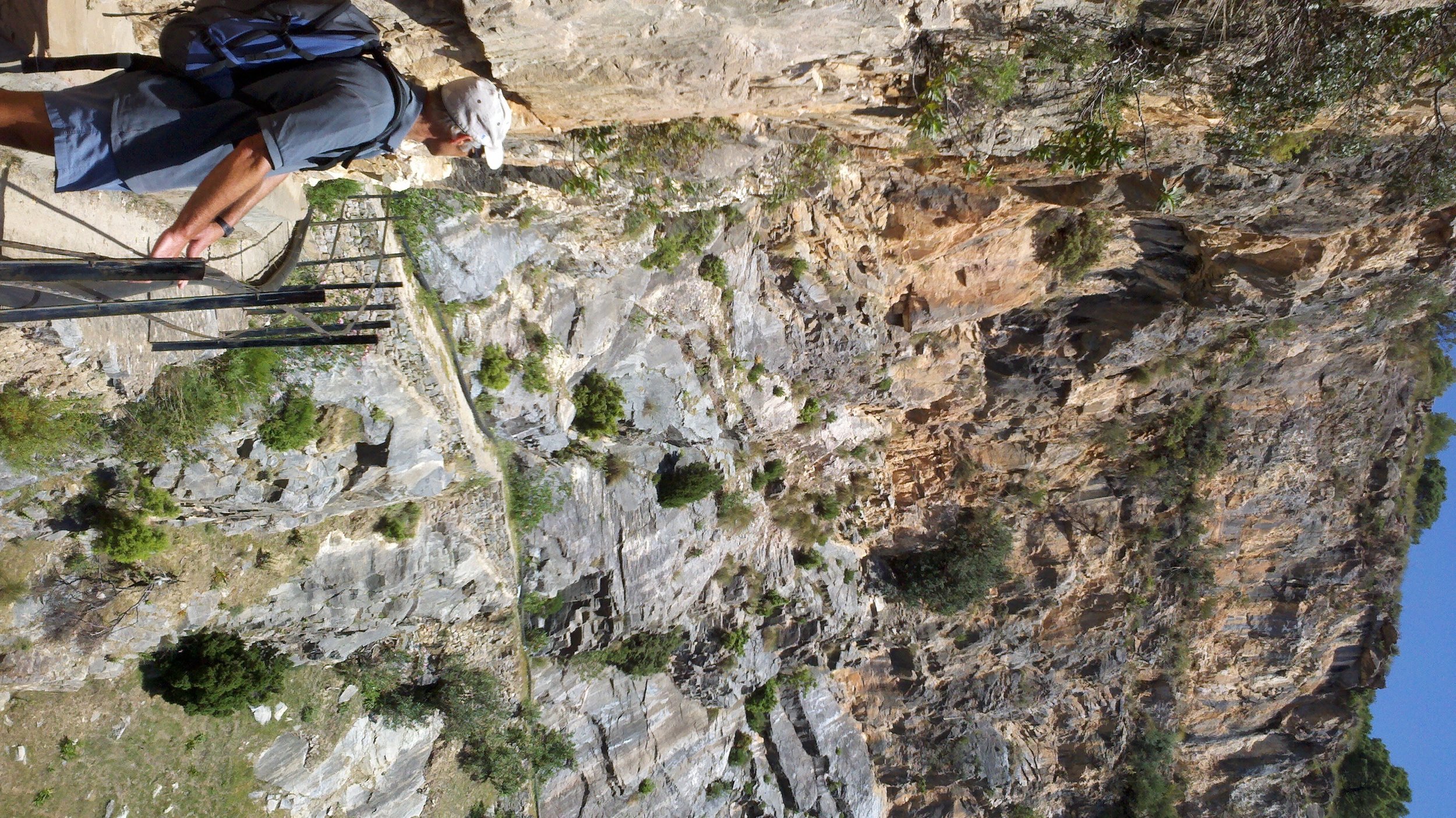 When I was in Spain in May, some neighbours of my parents offered to take me on a walk that followed the line of an ancient aqueduct built by the Moors centuries ago. Phil and Brenda took me to a spectacular route that started in the town of Canillas (about an hour from Malaga). The aqueduct was a small channel providing water for irrigation and drinking water for the town. It is about a foot square in cross section and open topped. It weaves its way around the hills through olive groves and wild flower meadows, climbing at a rate only slightly greater than a contour line. This lead us eventually up high into a fast running stream in a narrow gorge, which was the source of the water.What was interesting was that this was still the means of irrigating the olive groves on the hillside. So in some sections, where the Moorish stonework had begun to leak, the channel had been mended. Somtimes with stone and cement, and sometimes even with sections of black plastic pipeline. From time to time, there would be small sluice gates that could be dropped into the channel, blocking it off and then directing the water onto the fields below that section.
I have spoken in the past, here, about how there is a 'right to roam' in European countries. It's exact form takes different shapes, but for the most part, provided you don't take produce or destroy property and respect the land and personal rights of those who own it, you are entitled to go onto privately owned land. It means that in Europe that those who live in cities and suburbs and are not landowners, nevertheless have access to the land and have a sense of connection with it. People can also experience the peace and see the beauty of well managed agricultural land which has a very different effect on the soul than seeing 'wilderness' - land unaffected by man. New-world countries, such as America, Australia and New Zealand do not have such laws and so it is much more difficult to get access to agricultural land (as opposed to wilderness parks). Ironically, this means that even in New Zealand, a country in which perhaps 30% of the land is preserved as national parkland, there is still a greater sense of being deprived of contact with the land than you would have in a western European country. The reason for the difference between old and new worlds is that the new societies, driven by Enlightenment ideas of individualism that started to take hold in the 18th century rejected the traditional idea, which comes from Catholic social teaching, of land being a 'common good'. The traditional idea is that landowners balance their privelege of ownership, which is necessary so that the land can be cultivated in an ordered way, with certain responsibilities towards the community as a whole.
When I was in Spain in May, some neighbours of my parents offered to take me on a walk that followed the line of an ancient aqueduct built by the Moors centuries ago. Phil and Brenda took me to a spectacular route that started in the town of Canillas (about an hour from Malaga). The aqueduct was a small channel providing water for irrigation and drinking water for the town. It is about a foot square in cross section and open topped. It weaves its way around the hills through olive groves and wild flower meadows, climbing at a rate only slightly greater than a contour line. This lead us eventually up high into a fast running stream in a narrow gorge, which was the source of the water.What was interesting was that this was still the means of irrigating the olive groves on the hillside. So in some sections, where the Moorish stonework had begun to leak, the channel had been mended. Somtimes with stone and cement, and sometimes even with sections of black plastic pipeline. From time to time, there would be small sluice gates that could be dropped into the channel, blocking it off and then directing the water onto the fields below that section.
I have spoken in the past, here, about how there is a 'right to roam' in European countries. It's exact form takes different shapes, but for the most part, provided you don't take produce or destroy property and respect the land and personal rights of those who own it, you are entitled to go onto privately owned land. It means that in Europe that those who live in cities and suburbs and are not landowners, nevertheless have access to the land and have a sense of connection with it. People can also experience the peace and see the beauty of well managed agricultural land which has a very different effect on the soul than seeing 'wilderness' - land unaffected by man. New-world countries, such as America, Australia and New Zealand do not have such laws and so it is much more difficult to get access to agricultural land (as opposed to wilderness parks). Ironically, this means that even in New Zealand, a country in which perhaps 30% of the land is preserved as national parkland, there is still a greater sense of being deprived of contact with the land than you would have in a western European country. The reason for the difference between old and new worlds is that the new societies, driven by Enlightenment ideas of individualism that started to take hold in the 18th century rejected the traditional idea, which comes from Catholic social teaching, of land being a 'common good'. The traditional idea is that landowners balance their privelege of ownership, which is necessary so that the land can be cultivated in an ordered way, with certain responsibilities towards the community as a whole.
In Britain, which is a land of walkers (perhaps because the temperate climate is so condusive to it) there is a modern application of the custom, which has resulted in a network of public footpaths across its length and breadth. My guides Phil and Brenda, who were great company for the day, explained to me that because so many Brits live permanently in Spain now (about three quarters of a million), that the Spanish government has begun to establish British style footpaths through scenic areas and promote them to attract yet more people as tourists. Its not clear whether the Spanish people themselves are yet as enthusiastic about walking. It seems that perhaps Noel Coward was right, only mad dogs and Englishmen go out in the midday sun.
An irrigation channel seems to me an example of a project that is intended for the common good and requires each landowner to acknowledge this in allowing it to be built on his land and in the way in which he uses it. Once this was built if the landownder wanted to act against the common good he could and use all the water for himself: nobody below him would be able to stop him taking it. Taking what is necessary for himself is in accordance with the common good, because this is how he grows food for the community (which includes himself of course). Maybe a historian out there could help me, but I don't think this would have been built by the central government buying the land through compulsory purchase order on the land. My guess is that there has been a cooperative process between landowners.
Any, enough of the discussion, here's the walk - we start by filling up the water bottles at the public drinking fountain:
And then gradually climb our way up, through olive groves and some pine groves, pausing occasionally to look back at the town below. In time the trees clear and we can see the gorge ahead.
Here, below, is a sluice gate (it's on the end of the chain only partly visible). This is a simple metal plate which is dropped into the channel at this point, directing the water out through the opening which is visible above the waterline, bottom, left. This allows the farmer who owns this part of the land to irrigate his olive groves in the hillside below. We would see these periodically as we climbed. Clearly, there is mutual trust here and an assumption that no single landowner is going to abuse the privelege of access to the water and deprive everyone else of a share. Subsequent photos show the flourishing olive groves (note how the hillside is stepped to enable access when the olives are to be picked).
Round a corner, below, and things take a turn for the spectacular:
We can see the gorge in the distance which is the source of the water for the aqueduct, you can see the it cutting across the hillside halfway up on the left:
If we walk on an turn back, we can see, below, how precarious the path is in some places:
On the photo above you can see the aqueduct cut into the cliff face on the near part. In the distance to the left you can make out the line of the road through the hills, which follows the old Moorish trading route through southern Spain. It is seen more clearly in this photo:
Then we walk up into the gorge and to the mountain stream that is the source of water:
The very start of the aqueduct is on the left in the photo above. The manmade channel has water running in it, but it is not obvious in the photographs because it is so clear.
We stopped for a drink of water at a small waterfall in the stream above this point:
And then returned to Canillas retracing our steps. The day ended with a late lunch in the village square: Spanish coffee, which is a strong and milky, and tapas.

